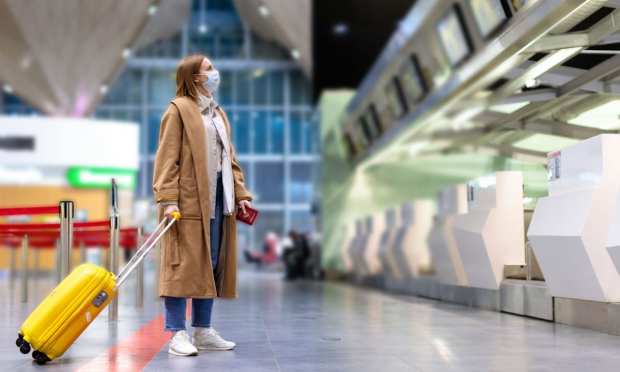Airline Industry Assesses Damage From 2020; Looks Ahead To Reset

New year, same problems for the global aviation industry, as the world’s battered and beleaguered airlines struggle to recoup 20 years of passenger growth that was evaporated by just nine months of the coronavirus pandemic.
According to Cirium’s 2020 Airline Insights Review and other related data, global passenger traffic fell 67 percent last year to levels not seen since 1999, as airlines cut flights and mothballed one-third of the commercial jet fleet in the wake of the steepest collapse in flights the industry has ever seen. International travel was especially hard hit, the study said, as only 23 percent of overall flights crossed national borders as a result of health restrictions and travel bans, as well as the cratering of business travel.
“This severe setback shows the true extent of the challenge faced by the struggling aviation sector as it has sought to reset itself in the new post-COVID-19 era,” said Jeremy Bowen, CEO of Cirium.
The study showed that April 25 was the absolute trough in the cycle, with just 13,600 scheduled passenger flights that day, marking an 86 percent drop from 2020’s high-water mark set in early January.
“[We are] confident aviation will weather this difficult and terrible year and emerge in better shape – with younger, more fuel-efficient aircraft and right-sized fleets – to gradually navigate its way to recovery in the years ahead,” he added.
Navigating in the Dark
If there’s one thing airlines are good at, it’s navigating at night and through poor visibility – and experts say those very same skills will be required moving forward. While the COVID vaccine and an end to the virus has long been viewed as the gold standard for recovery, the first few weeks of inoculation have been much slower than expected, and have done little to boost the flying public’s confidence.
As a result, the recovery forecasts of industry executives vary widely, The Wall Street Journal reported, ranging from a few months by Delta Air Lines, to 80 percent restoration by summer at Alaska Airlines, to the “wait-and-see”, maybe by the end of 2021 view put out by United.
“I recognize a lot of people are saying it’s going to happen faster, and I hope they’re right,” United CEO Scott Kirby told the Journal. “This is one of those strange situations where I think we’re probably better at forecasting what’s going to happen a year from now than we are what’s going to happen next quarter.”
Other Considerations
In addition to the uncertainty surrounding the rollout of the vaccine, industry experts are expecting to see a lot of those mothballed jets – especially the huge ones, like the 850-passenger Airbus A380 – being converted to cargo and retired, and being replaced by smaller, newer, more efficient models.
“Nine in 10 ‘superjumbo’ jets are currently grounded, the Cirium study found, with just 21 out of 243 Airbus A380s still in service in the face of high costs and weak demand.
Ironically, the COVID vaccine is also impacting the airlines’ cargo conversion plans, but in a positive way, as they reconfigure payload space to make room for billions of doses of the new vaccine.
“This will be the largest and most complex logistical exercise ever,” said Alexandre de Juniac, CEO of the International Air Transport Association. “The world is counting on us.”
According to IATA’s estimates, the unprecedented airlift will require 8,000 loads in a 110-ton capacity Boeing 747 freighter over a two-year period to supply 14 billion doses. While 8,000 flights is no small amount, in the context of the 136,000 pre-pandemic flight peak, it is not likely to provide a huge boost to earnings.
And then there’s the business travel wildcard: the high-cost, frequent-flying segment of the industry that once accounted for 60 to 70 percent of pre-pandemic fares. While the rise and comfort of Zoom calls, as well as the same pandemic-related concerns that hang over the business travel segment, experts predict a bit of a reconfiguration boom as airlines move to make business class even more private, with more enclosed, suite-style seating.
“Business classes have been moving toward more space and privacy pre-COVID for sure — I don’t see that stopping,” said Evan Konwiser, executive vice president of product and strategy at American Express Global Business Travel. “COVID, if anything, has shown that the value of that space is more than just personal comfort. Now, it’s also about the feeling of safety.”
